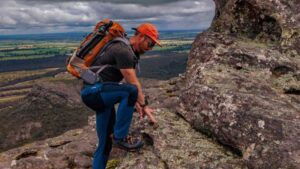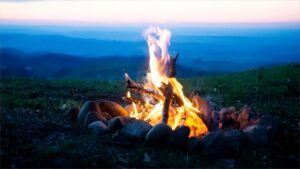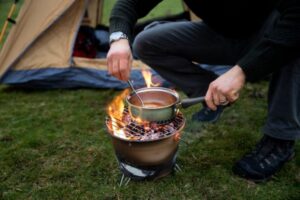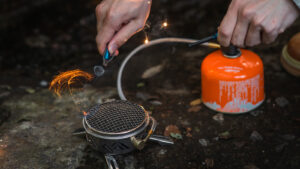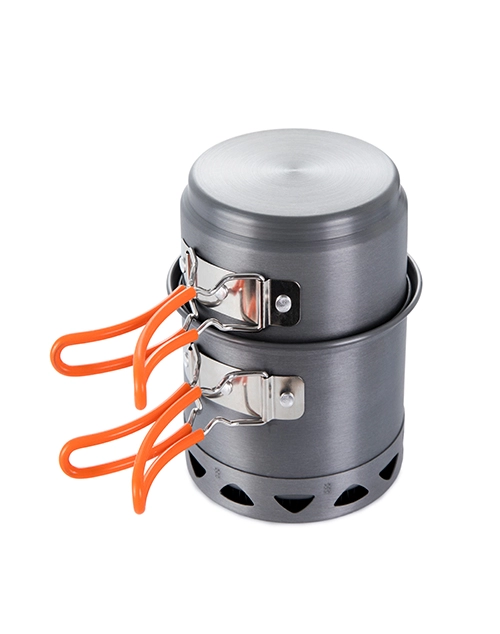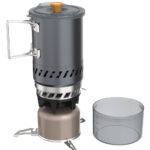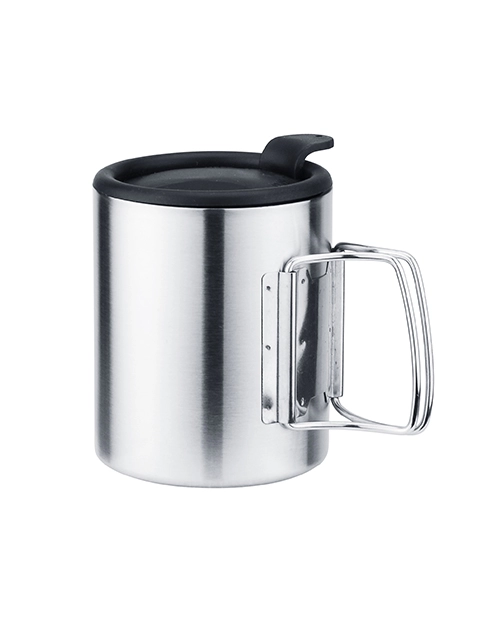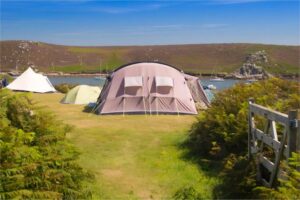
- Choosing a Campsite
For your first camping trip, you will have access to a wide range of campground options. Things to check for include if they are ‘kid friendly’, whether dogs are permitted, and the availability of amenities like toilets and showers. As a first-time camper, it’s best to reserve a campsite with high-quality amenities and a nearby town so there are lots of places to eat and purchase supplies if you miss anything.
- Buying Your Tent
Tents come in a variety of forms and sizes, so select one that is appropriate for your needs. When selecting a tent, consider one that is one or two sizes larger than the amount of people that will use it. This will provide you ample space in the tent to store your things while also providing a pleasant sleeping area. If you’re unclear which tent is best for you, check out our tent guide.
- Buying Sleeping Bags
Whatever time of year you choose to camp, carry a sleeping bag because nighttime temperatures might drop. When selecting a sleeping bag, consider the season and temperature rating to guarantee it will keep you at the appropriate temperature for the time of year you want to camp.
- Practice pitching your tent
One of the most important tips for first-time campers is to practice pitching the tent at home. This ensures that you know how to set up and take down the tent, and any issues can be resolved at home rather than at the campground!
- Have a Practice Camp
After you’ve practiced pitching the tent, why not hold a practice camp? Camping might be intimidating for novices, but spending a night in the yard can help you determine how many layers you’ll need to wear and whether your kit is sufficient.
- Setting up at the campsite
When setting your tent, attempt to pitch it in a location where the ground is level and free of debris that might harm your tent. To increase stability, always place the tent’s back to the wind and pegs into the ground at a 45-degree angle.
- Furniture and Decorations
Camping chairs, plastic tablecloths and tablecloth clips for the picnic table, insect-repellent candles, tiny tables, shade structures, and portable rain tents will enhance the design and comfort of your campground. An outdoor rug can assist in capturing dirt and grass before you enter your tent, RV, or lodge.
- Necessary items
Bring hygiene and toiletry goods such as towels, washcloths, soap, shampoo, shower shoes, toothbrush, and toothpaste, and, if appropriate, a contact lens case and solution. A nice robe and slippers may also provide you with comfort.
- Cleaning supplies
Remember to tidy up your campground after every meal and before you depart. Bring trash bags, paper towels, a cleaning sponge, and wipes.
- Safety equipment
Keep yourself safe with bug repellent, a water bottle, sunscreen, a first-aid kit, and a portable fire extinguisher. A local field guide might also be handy if you want to explore a new location.
- Kitchen Supplies
Bring kitchen tools such as pans, tongs, spatulas, a grill grate for cooking over an open fire if needed, roasting forks, a coffee percolator, plates, and utensils. Make sure all of the pots and pans you bring are approved for camping usage and can handle cooking over an open flame, or whatever you intend to make your meals.
- Clothing
Much of your wardrobe selections are based on where you are going, the season and weather conditions, and the activities you want to participate in:
- Rain gear includes boots, a water-resistant coat, and an umbrella.
- Long-sleeve shirts, lightweight tops, underclothes, and jackets are all good options for light layering.
- Extra socks and underwear.
- A swimsuit or swim trunks, along with shoes or flip flops.
- A sunhat, visor, or beanie, depending on the weather.
- Shoes suitable for various activities, including hiking boots and comfortable strolling sneakers for touring and excursions.
- If applicable, winter gear should include thermal layers, gloves, a scarf, an insulated coat, thick socks, and long pants.
- Camping Stove
You will need a portable camping stove, pots and pans, a coffee pot, and other culinary supplies. whether you’re heading to a campsite, check ahead of time to see whether they have picnic tables and benches; if not, bring your own folding table and chairs.
- First Aid Kit
When assembling your first aid pack, you will want to include items like:
- Bandages, gauze pads, first-aid tape, and Ace bandage wrap
- Antiseptic for wounds, scrapes, and burns.
- Bring allergy medicines, including an EpiPen if necessary, as well as mosquito and insect repellant.
- Take your first aid kit with you for hikes or other excursions away from your campsite.
- Extra Snacks and Water
There’s something about the great outdoors that makes you hungry and thirsty, so don’t be shy about taking food and drinks. These necessities might be all you need to climb Mount Kosciuszko (Australia’s highest peak), travel the Nullarbor Plain (the world’s biggest single exposure of limestone bedrock), or walk the Bicentennial National route (the world’s longest route)!
- Compass & Maps
When you’re not at your campsite, a compass is tiny and portable, fitting easily into your pocket or bag. If you are camping at a campsite, they may provide local maps. If not, make sure to pick some up on the way.
- Multipurpose Pocket Knife
Carrying a knife has been a tradition since the Romans developed the first folding pocket knife, which is still used today. We recommend bringing one of them on your camping trip, as a pocket knife is a versatile tool that may be handy in a variety of scenarios.
Conclusion
This checklist of must-have things will help you get started on your first camping trip. As your departure date approaches, be sure to add any extra must-have things to your list. One piece of advice we usually provide is to pack as little as possible, as you will be carrying your own stuff! Believe us, your journey will be lot more pleasurable without a 100-kilogram bag!
ODM service
Looking for reliable wholesale outdoor equipment? At Deermaple, we specialize in ODM service, offering high-quality and innovative cooking gear tailored to your needs.
If you are interested in outdoor gear wholesale, please contact us.

